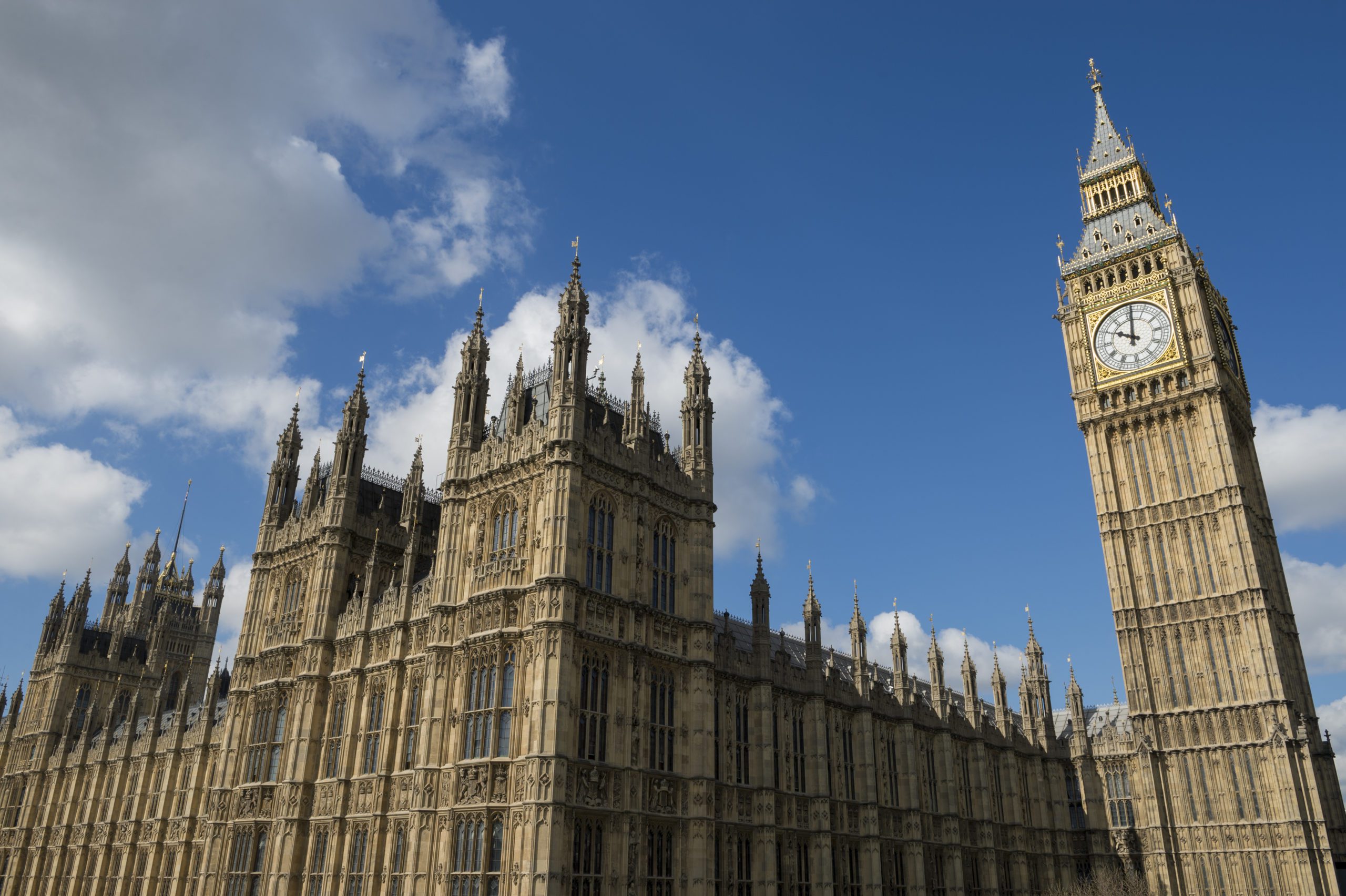
An apocalyptic “meh” seemed to greet the government’s bumper package of energy- and climate-related policy announcements and documents released on 30 March, which appeared short on new ideas and sources of funding.
Cynics made some mileage from the almost The Thick Of It-style title juggling, with the event undergoing a hasty re-christening from “green day” to “energy security day” (as Carbon Brief noted), as it became clear that future oil and gas exploration remained a key component of the government’s plans.
The day itself seemed to pass in a blur of documents and buzzy-sounding initiatives, with little of it underpinned by anything new. A central plank was the policy paper “Powering Up Britain”, which presented plans for tackling energy security and net zero.
Environmental pundits acknowledged some promising material, including plans to develop offshore wind, the introduction of zero-emission vehicle mandates, a new grant scheme to help insulate homes, and a consultation on a UK Carbon Border Adjustment Mechanism (CBAM).
But overall dismay and underwhelm seemed to colour the package’s reception, and disappointment at certain omissions – for example, nothing on energy storage, or rail electrification, or any sign of an outcome on the NPPF consultation on onshore wind (so the de facto ban on the energy source remains in place – “nonsensical” said Greenpeace).
Such an extended and heartfelt profession of commitment to net zero was also clearly an awkward place to let slip that fossil fuels were still very much on the agenda, and within days of publication of the latest IPCC report.
The Sustainable Energy Association (SEA) said: “We believe a fossil fuel phase-out date is crucial to provide much-needed confidence to the industry and to direct investment towards more sustainable solutions.”
No one was in a hurry either to forget that the whole thing was also timed to remain within a deadline set by the High Court last July, giving the government until 31 March to provide detailed figures showing how it would meet the future carbon budgets promised in accordance with the Paris climate agreement.

Funding frontier
Offshore wind was promised support by one of the initiatives: the Floating Offshore Wind Manufacturing Investment Scheme (FLOWMIS), providing “up to £160m” to support port infrastructure projects, in a bid to “kickstart” investment into the UK’s emerging floating offshore wind industry.
Noting the UK’s status as a world leader in offshore wind deployment, the document said floating wind “represents the next frontier in this green growth story”.
“Floating turbines, which can be deployed in deeper waters than conventional turbines, will boost energy capacity even further by allowing wind farms to be situated in new areas around the UK coastline where wind strengths are highest.”
Arup’s spokesperson felt this “could dramatically increase our renewable energy capacity” but added that “we need to develop the storage infrastructure which is essential for long-term reliance on wind power.”
Scottish Renewables said the fund “falls woefully short of what we need.”
“We need meaningful investment and we need it now,” said Claire Mack, chief executive of the trade body.
She cited the recent Floating Offshore Wind Taskforce report, which “recommended that £4 billion is needed to develop ports as soon as possible across the UK and is critical to unlocking the economic and environmental potential of our offshore renewable energy resources.”
“The 14 floating wind projects announced as part of the ScotWind Leasing round mean Scotland has the most seabed dedicated to develop commercial floating wind anywhere in the world. However, more than three Scottish ports urgently need to be transformed into new industrial hubs to ensure we have the necessary supply chain and manufacturing bases required for mass floating wind deployment by the end of this decade.”
Solar puzzle postponed
On solar, the statement referenced ongoing ambitions for “a fivefold increase by 2035”, or “up to 70GW, enough to power around 20 million homes”. The SEA was “heartened by the positive steps taken towards promoting rooftop solar in commercial and domestic properties” but felt it was unclear what would provide the investment needed to deliver on this ambition, beyond the document’s promise to set up a taskforce to puzzle it out, one of the recommendations from the Independent Review of Net Zero which the government seems to be taking up. The SEA felt that “there is not much to latch on to other than the position will not be made more difficult for developers of these assets.”
Property developer Fisher German found it “helpful” that the document had clarified that solar deployment should be focussed on brownfield, industrial and only low to medium grade agricultural land.
Home heating: Getting warmer, but a long way to go
On energy efficiency the government said it will be moving forward with “The Great British Insulation Scheme” – a rebranding of the previous ECO+ plans, which will upgrade 300,000 of the country’s least energy efficient homes. The plan is “a start but barely touches the full scale of a problem which has been largely ignored by the UK government to date,” said Sam Tye of green energy law firm Fladgate. “There is a very long way to go before the UK building stock is in alignment with achieving Net Zero by 2050.”
TUC General Secretary Paul Novak felt the measures “don’t add up to a national plan on the scale needed. Not for our net zero target, nor for protecting jobs and industry.”
“The home improvements scheme to reduce energy use and cut bills covers less than a tenth of the social housing that needs it.”
“And there is no reassurance for energy-intensive industries that cannot cope with spiking energy prices.”
“The overall approach is fundamentally flawed because it leaves families at the mercy of the same energy firms that have been ripping them off.”
Affordability seems to be an issue with heat pumps, in the UK at least. The government’s £450million Boiler Upgrade Scheme – which offers a £5,000 grant to anyone buying one – has only used about a third of its budget to date, and the poor take-up is variously blamed on it being still too expensive for many households, as well as unsuitable for many properties. Or maybe just not enough people know about it. In any case the scheme has now been given an extension to 2028. The government also announced an effort to boost manufacturing and supply via a “£30 million Heat Pump Investment Accelerator”. Many seemed unconvinced any of this will move the dial on take-up.
“The biggest question is ‘who will pay for all this?’” asked Richard Smith of Sandstone Law. “Fitting new heating systems in houses retrospectively is much more expensive for homeowners than the government suggests. Will landlords spend the money for their tenants?” Sam Tye of Fladgate believed there would need to be a significant reduction in the cost of heat pumps – something the government is presumably hoping to help bring about – to make a real difference, “but that alone will not be enough, as heat pumps are unsuitable for a large percentage of homes in the UK due to poor energy efficiency and lack of insulation in the country’s housing stock.”
Similarly, the SEA said: “We recognise that a more diverse range of technologies will be necessary to fully decarbonise heating in homes and buildings and achieve the right outcomes, and we urge the Government to consider a more technologically agnostic approach in its policy planning.”
“By taking a fabric-first, holistic, and technology neutral approach to retrofit, the UK can accelerate its trajectory to net zero carbon, cost-effective and healthy buildings.”
Greenpeace noted that the UK’s neighbours “are snapping up heat pumps like hot cakes” and felt what was needed was “a much more rounded strategy to increase heat pump uptake”, including skills packages, better consumer advice and promotion, and more money.
Hydrogen: Not a time to get blue?
Powering Up Britain also included a nod towards hydrogen for home heating, acknowledging the role it can play here, alongside its principal role in providing low-carbon energy for harder-to-electrify areas of industry, and heavier transport such as aviation and shipping. The government also confirmed the first winning projects from the £240 million Net Zero Hydrogen Fund. Other hydrogen announcements included projects shortlisted for support via the first electrolytic allocation round, and the intention to produce a hydrogen delivery roadmap by the end of the year.
As it stands, the most affordable hydrogen is currently generated using non-renewable sources, with CCUS included to keep it below the low-carbon threshold. Many environmental groups remain implacably opposed to any such ‘blue’ hydrogen. Greenpeace – in its release anticipating the green day announcements – argued that it “is not compatible with the UK’s net zero plans”, adding: “It’s like claiming beef burgers are vegetarian because cows eat grass.”
The Powering Up Britain document announces eight initial Track-1 CCUS projects, including those delivering CCUS-enabled hydrogen to “kick start the hydrogen economy”.
The projects are split between two geographic areas: the East Coast Cluster, with projects on the east coast of the UK, and the Hynet cluster, which relates to projects in the northwest of England and north Wales.
These projects are to be operational by 2030, and the document said further projects will be added to these clusters – to be announced later this year.
For Akin, this all seemed to represent “slow progress”, noting that “The government’s proposed hydrogen support business models are complex and will take time to deliver.”
“The EU and US are looking for simpler and quicker ways to deliver investment.

Fossil-fuel framing
Far more controversial it seemed is the Energy Security Plan statement that “we remain absolutely committed to maximising the vital production of UK oil and gas as the North Sea basin declines.”
The latest North Sea oil and gas exploration round atracted 115 bids, on which awards were expected to be made in 2Q this year.
As Carbon Brief observed, the plan omits mention of the government’s climate compatibility checkpoint, announced in 2021, whereby new licenses can only be awarded if they are deemed to preserve the UK’s commitment to net zero (if that’s even possible, as many have wondered).
At the time of writing, the government seemed poised to make a decision about developing Rosebank, one of the largest undeveloped oil and gas fields in the North Sea. The project seemingly sidesteps the need to comply with the checkpoint’s requirements as its license was awarded prior to the existence of this metric.
All of this is seemingly justified on the basis that oil and gas will play “a vital role… in the [energy] transition”, to paraphrase Grant Schapp’s introduction to Powering Up Britain. The demands of energy security are also referenced but, as Greenpeace’s Philip Evans explained to Carbon Brief, this rationale is irrelevant since the oil and gas from any new exploration will belong to the company extracting it, not the UK, and it will be sold to the highest bidder.

Grid connections: No room for more delays
Any optimism about new energy sources coming online seemed overshadowed by the lack of progress on planning and connection issues with the electricity grid, an area that is “currently threatening to completely derail the net zero transition of the grid,” said Sam Tye of Fladgate.
The Powering Up Britain document acknowledges the need to revisit the issues, with promises to present recommendations to ministers in June on what can be done to accelerate grid delivery. None of it sounded likely to move the dial on investment in the area, believed Tye.
Andy Willis, founder of Kona Energy, which develops grid-scale battery projects, said: “Without significant grid connection reform, the vast potential of clean energy development will linger trapped behind red tape and bureaucratic delays.”
“Kona has approved battery storage facilities that could be built and pumping power into countless homes in a matter of months, but due to the archaic system that will now take years.”
“It is not uncommon to hear of connection dates in the late 2030s. This is entirely unsustainable to expect international investment to keep coming if it won’t see returns for almost twenty years.”
While the green day announcements were underway, his own firm had been in Texas for the Energy Storage Summit USA 2023, and had “plans in place,” he said, “to divert investment from the UK to the US.”
“This is multifactorial, including on the basis of rapid American grid connections and a more favourable investment climate, alongside a willingness from authorities to find reasons to support projects, rather than to delay and obstruct. They are seriously backing their net zero ambitions with the US Inflation Reduction Act. Without a British equivalent, the UK will fall behind.”
He concluded: “Net zero by 2050 is downright impossible without a grid revolution.”

Carbon leakage plug
The statement acknowledged the fear that our decarbonisation efforts might be undermined by production shifting overseas to countries with less stringent carbon pricing and climate regulations. Environmental commentators seemed uniformly welcoming of the announced consultation on a UK Carbon Border Adjustment Mechanism (CBAM), and associated product standards, “which could be deployed from the mid-2020s onwards”.
This would impose levies on imported goods in a bid to put a fair price on the carbon emitted during their production, ensuring a level playing field for domestic producers, and encouraging other countries to switch to sustainable methods. The EU has a CBAM nearing approval, and due to begin imposing levies in 2026. As the Financial Times noted, this has proved contentious with China, for example, which has said that it could be discriminatory.
All in, it was a policy package deemed “long on lofty ambitions and grand statements but rather weak on detail”, as lawyer Sam Tye put it. And the omissions seemed baffling enough to undermine confidence – for a plan that attempted to shore up energy security, for example, it was hard to ignore the lack of any mention of energy storage.
Almost universal seemed the appeal for the government to do much much more.






